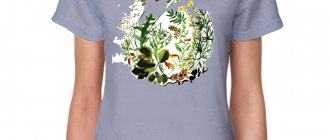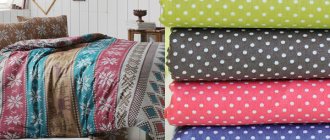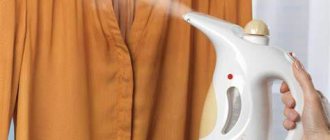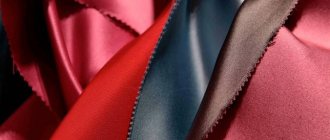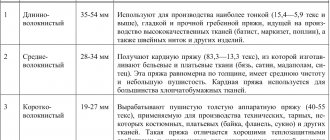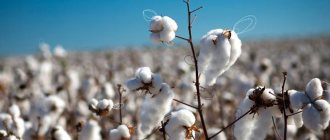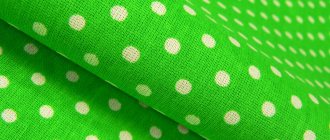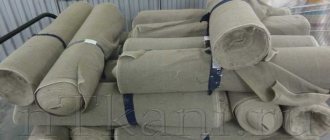Do you think cotton shrinks after washing? You are probably confidently shaking your head, because even our grandmothers knew that this fabric is not subject to shrinkage, and therefore, every weekend they selflessly boiled bed linen and diapers in huge enamel buckets. Who had wooden tongs at home for boiling linen and clothes?
No one over 35 is now surprised. However, is it really that simple? Does cotton shrink, for example, when washed at 90 degrees? Let's look at this issue in detail!
What kind of fabric is cotton?
Now cotton production accounts for about 50% of the entire textile industry in the world. The fibers are obtained from varieties grown specifically for this purpose. Plant types:
- northern herbaceous annual cotton, from which short and stiff fibers are extracted;
- Indian tree cotton;
- Barbados or Peruvian cotton, used to extract long, high-quality fibers;
- the most popular is common cotton.
After being collected at cotton collection points, the raw materials are sent to the plant, where the seeds are separated. Next, the fibers are sorted, and the resulting long threads are used for the production of fabrics, and the short ones for the production of cotton wool.
Nowadays cotton is produced on a large scale in India, the USA, China, Egypt, Uzbekistan and other countries of the world.
Properties and characteristics of cotton
Many of us know that natural cotton fabric wrinkles a lot. This is due to the fact that the fibers of the material lack elasticity. In addition, they:
- durable;
- resistant to alkalis, phenol and acetone;
- withstands the influence of moisture and light for a long time;
- hygroscopic.
Natural cotton fabric has the following advantages:
- softness;
- ease of painting;
- hypoallergenic;
- easy to bleach;
- absorbs moisture well.
Flaws:
- high-quality canvas is expensive;
- wrinkles a lot;
- difficult to smooth out;
- may shrink;
- takes a long time to dry;
- Low quality material quickly becomes unusable.
The nuances of the first wash
To ensure that cotton items retain their original appearance for a long time and do not shrink too much, it is important to carry out the first wash correctly. To do this, you must follow the following rules.
- Wash the item immediately after purchase, and not after a few days of use.
- Wash by hand.
- Use cold water without any detergent.
You will need to soak the clothes in a basin for 10-15 minutes, then rinse and send them to dry in fresh air, away from sunlight.
Subsequent washings can also be carried out in the machine, provided that the item is made of dense material. Thin fabrics will have to be tidied up only by hand.
Types of cotton fabrics
There is a huge variety of cotton fabrics on sale. Minimal knowledge about its types will help you make sure you don’t make a mistake with the quality of the purchased material.
Organic
Organic cotton is an environmentally friendly material produced without the use of chemicals. To grow cotton, no pesticides or insecticides are used, but only natural fertilizers - manure and compost. The collection of fibers is carried out manually, since only a person is able to determine the degree of maturity of the fibers. Organic fiber production accounts for only 1% of the world's cotton turnover. It is labeled as “organic cotton” and is suitable for sewing clothes for newborns and allergy sufferers.
Mercerized
If you see a “mercerized” mark on a product, it means that the material was additionally treated with a special compound to improve its quality characteristics. In the case of cotton, the fibers are treated with caustic soda, which increases the strength and wear resistance of the material. Typically, mercerized cotton is used to create yarn or in the textile industry for making home linen.
Cotton jersey
Originally produced only from wool, jersey fabric began to be improved over time by adding other fibers to the composition. Cotton, which is part of the fabrics, gives the material appropriate properties, such as shape retention, lightness, and matteness.
Mixed
At the moment, blended cotton is considered the most wear-resistant, which has made it popular in the production of workwear. The material is a mixture of synthetic polyester fibers and cotton itself. The material is characterized by maximum strength and durability, retains color well, does not conduct static electricity, and can withstand extremely high and low temperatures. In addition to workwear, jackets and raincoats, camping equipment, awnings and tents are made from cotton blends.
Pima
Pima cotton is considered the softest in the world because it is made from the longest cotton fibers grown in Peru and the United States. It has maximum strength and softness, due to the special weave of fibers, as well as unique adsorbing properties. Due to its high absorbency, it is easy to leave a stain on this fabric.
Interlock
The material consists of 100% cotton fibers woven using a special knitting technique with two needles. The result is a double knitted fabric, smooth on both sides. The material is very soft and pleasant to the body, which is why it is widely used in the creation of children's clothing, dressing gowns and pajamas. There are 3 types of interlock: singing, ring and open. Each of them is processed by various surface grinding methods and has properties such as wear resistance, thermal insulation and breathability.
Ranfors
Ranfors cotton came to us from Turkey, since initially it was produced only by the company of the same name. The peculiarity of the creation of the material is increased cleaning and processing of fibers, as well as a special diagonal weaving technique, distinguishable from standard plaid. As a result, the fabric becomes more durable and dense, is less subject to deformation and does not shrink. The high density of the fabric allows you to dye products in a variety of colors and apply bright designs. Most often, bed linen is made from this material.
Percale
Percale is a standard cotton fabric produced by twisting the fibers in a characteristic way before weaving. During the production process, the canvas is also impregnated with a special composition, thanks to which the material becomes especially durable. At the same time, the canvases do not lose their softness and lightness. Thanks to its declared properties, percale becomes an excellent raw material for sewing bed and underwear, blouses and shirts.
Batiste
Lawn fabric comes in several types, but the most expensive are those hand-twisted from natural cotton. The material is very light and airy, allows air to pass through well, does not cause skin reactions, is soft, but at the same time holds its shape well and does not deform. Cotton-based cambric is mainly used for sewing clothes, both everyday and festive, as well as for making home textiles.
Cotton gas
Gas materials are particularly airy and light. In the production of fabric, the thinnest, almost transparent threads are used. In addition, the material is unique due to its special weave of fibers that do not adhere to each other. Due to the air space between the threads, the unique lightness of the material is achieved. The fabric is mainly used to make light summer clothes.
Grebennoy
Combed cotton is a special type of yarn produced by twisting cotton fibers that have not been combed. The yarn turns out fluffy and soft. Products made from combed yarn have a matte finish, absorb moisture well and allow air to pass through.
Cotton voile
Delicate and flowing fabric, which belongs to the elite category. It is created using a plain weave of fibers and is somewhat reminiscent of gauze. On sale you can find plain-dyed, bleached or printed veils. Canvases painted with transitional colors look original. Voile cotton is mainly used for making wedding and evening dresses or accessories, as well as home decor items.
Mako cotton
Expensive material produced in Egypt. It has unique softness and a unique noble shine. The material is mainly used to produce high quality underwear.
Peach cotton
A special type of cotton fabric with a soft velvety surface, which is achieved by treating the surface of the finished fabric with a special brush.
Cotton BIO-WASH
A material that is pleasant to the body, the softness of which is achieved through treatment with natural biologically active, rather than chemical, substances. The result is a fabric that is soft and pleasant to the skin and does not cause allergic reactions.
What is sewn from cotton?
Cotton is one of the most popular materials used for the production of clothing and home textiles. For example:
- light cotton fabric is used for sewing summer clothes, since the material absorbs sweat well and allows the skin to breathe;
- for sewing warm clothes, brushed cotton is used;
- simple but high-quality sets of bed linen, tablecloths, curtains and drapes are also made from cotton fabrics;
- technical cotton materials are used to create packaging materials.
How to dry and iron cotton so that it does not shrink?
It is important not only to wash cotton items correctly, but also to dry them in accordance with the following recommendations.
- Hang products outdoors, away from sunlight.
- Try not to use clothespins, which can leave noticeable marks, but use hangers. If we are talking about bedding, you can simply throw it over a rope, folding it in half.
- When drying in a room, place cotton items away from radiators and heating devices.
You need to iron things made from natural fabrics as follows.
- Remove the slightly damp product from the rope, and if it has already dried, moisten it with a spray bottle.
- Lay out the clothes on a flat surface covered with thick bedding.
- Set the heat of the iron from 200 to 220 degrees.
- Iron the material by moving the device in the direction of the warp threads.
- Use the steam function.
You can iron cotton while it is wet, but in this case the heating of the iron should not be too high, otherwise scorch marks will appear on the surface of the fabric.
Basic rules for washing cotton items
In order for a cotton product to last as long as possible, utmost attention should be paid to the subtleties of caring for it. Washing and ironing methods are quite simple and accessible and do not require additional effort or time.
Preparing items for washing
To avoid spoiling things during processing, prepare them properly. For this:
- always sort clothes into colored and white to avoid staining of the material;
- separate items that do not require thorough cleaning;
- Take away heavily soiled items and pre-soak them before washing;
- Be sure to fasten your favorite blouses, shirts and sweaters with all the buttons and turn them inside out.
Handwash
It is preferable to hand wash items made from thin and light materials. This type of washing has the following nuances:
- try not to soak lightly soiled items for a long time;
- for processing, choose gentle products;
- Pre-soak clothes with stubborn stains in hot water with added detergent;
- use non-hot water for washing and rinsing, temperature up to 40 degrees;
- determine the washing time based on the degree of soiling of the item, for example, a not too dirty blouse can simply be rinsed in water;
- for rinsing, use fabric softener, which gives the fibers additional softness;
- try not to twist things to avoid shrinkage and deformation.
Washing in a washing machine
Before washing, be sure to prepare your items: sort by color and degree of soiling, and if necessary, pre-wash or soak the item.
If your machine has a cotton washing function, choose it. If not, select the normal wash function with a suitable temperature setting. Also adjust the washing time based on the degree of soiling of the item. If the products only need to be refreshed, reduce the processing time to 30–40 minutes.
At what temperature should I wash?
The choice of washing temperature depends on the degree of soiling of the item and the color of the material. It is preferable to wash colored items at a temperature of 30–40 degrees. If you neglect this rule, the colors on the fabric will quickly lose their brightness.
White, heavily soiled items can be washed at temperatures up to 90 degrees. However, you should not use this temperature regime too often, otherwise the fibers will quickly weaken. Items for newborns, such as cotton diapers and undershirts, are recommended to be washed in hot water at 90 degrees and then ironed on both sides with a hot iron.
If you are unable to remove stains from very thick or colored material, you can try washing cotton at 60 degrees. At the same time, it is extremely important to choose a suitable detergent and remove complex stains before treatment.
What to wash
You can wash cotton items with any washing powder. However, if you are looking after your health or washing children's clothes, choose safe products without phosphates and complex surfactants. An excellent product for automatic and hand washing will be laundry soap shavings.
How to wash material without shrinking
One of the most common problems when washing cotton is shrinkage. To prevent such consequences:
- always study the label on the product and take into account the recommendations provided;
- do not use too hot water for washing;
- set the minimum spin speed on the machine;
- do not neglect the drying rules.
How to remove stains from cotton
Try to remove difficult stains before the main wash. First of all, try to remove stains of any nature using laundry soap. If this doesn't help, use store-bought stain remover or improvised products. For example:
- greasy and oily marks, as well as stains from chocolate and coffee, are easily removed by ammonia;
- You can remove stains from fruits or wine with hot milk;
- blood stains are easily removed by soaking the product in cold water for 90–120 minutes;
- traces of grass are removed with a mixture of ammonia and ethyl alcohol in a ratio of 3:1;
- You can remove marks from a ballpoint pen using dissolved ammonia in a glass of water;
- Remove iodine stains with dry starch;
- If you have yellow stains in your armpits, try soaking them in a hot saline solution and then washing the item as usual;
- You can clean traces of rust with lemon juice or a solution of citric acid.
Cotton Bleaching
If yellow or gray appears on white cotton items, you can use bleach. The procedure can be carried out using both purchased bleaches and improvised means. If you bleach items in the washing machine, add 50-70 ml of white to the pre-wash compartment.
Choose powder bleaches based on the type of material according to the instructions on the package. You can also use citric acid, hydrogen peroxide or ammonia to bleach cotton.
Do not neglect the amount of bleaching, since exposure to chemicals has a detrimental effect on the quality of the fibers. To use the whitening procedure as rarely as possible, try:
- do not wash white items together with colored ones;
- separate synthetics from natural fabrics;
- for a light whitening effect, select a wash cycle at 60 degrees and add 2-3 tbsp to the washing powder. spoons of table salt.
Features of washing colored items
Wash colored items only in cool water up to 40 degrees. To remove stains, do not use chlorine-containing products, but only non-aggressive or oxygen stain removers.
How to wash fine cotton
When processing items made from fine cotton, give preference to hand washing. Light transparent fabric is much easier to rinse by hand, with minimal damage to the fibers. Try not to twist the product, but simply hang it over the bathtub on a hanger and let the water drain. To prevent fabric from shrinking, dry clothes naturally, away from sunlight.
How to soften and stretch fabric
If the material shrinks after washing, you can stretch and soften it in the following way:
- Dissolve 4 tbsp in 2 liters of water. spoons of vinegar.
- Place the product in the solution and leave for 10 minutes.
- Remove the item and stretch it with your hands in different directions.
- Weight the clothes and leave them to dry completely.
You can also return things to their original shape using the steam function on the iron. To do this, carefully stretch the slightly damp item during ironing and steam it with an iron.
Does cotton shrink when washed and why does this happen?
Cotton (cotton) is a natural material with increased strength, but in order for products made from this fabric to retain their original appearance, they must be handled correctly.
Why do things made from natural fabrics shrink not only as a result of being in the washing machine, but also after washing by hand? There are a number of reasons.
First of all, cotton shrinkage is determined by the characteristics of the fibers. The fact is that the raw material for the production of such fabrics is a fluffy mass reminiscent of cotton wool. As a result of twisting, loose threads are obtained, and under the influence of water, the fibers “stick together,” which leads to a decrease in their size. For this reason, dense cotton materials shrink the most, and the higher this indicator, the more the item will shrink after washing.
In addition, such fabrics can shrink if washed at high temperatures. For this reason, heating the water should not exceed 60 degrees so that the item does not decrease in size.
Having received the answer to the question of whether cotton shrinks when washed, it would be useful to find out how much the size of the item can change. Most often, the material is reduced by 5-6% in length and 2-3% in width.
Advice
To avoid getting an unpleasant surprise after washing and drying a cotton item, you need to choose clothes one size larger.
Ironing
Before ironing, be sure to check the material for stains; if you iron them out, they can settle firmly in the fibers and subsequently cannot be removed. Ironing items while slightly damp will help prevent creases and creases. If the fabric is still dry, spray the material with water during ironing or use a similar function on the iron.
For better smoothing, use the steam function, if available.
For large items such as duvet covers, sheets, curtains or tablecloths, first fold them several times and iron first on one side, then on the other, and so on. Repeat the manipulations until the product is completely ironed.
Does it sit down or not?
Let's draw a logical conclusion from what has been said. When wet, the fluff in the fibers inevitably sticks together, as a result, the thread becomes denser and smaller in volume. Therefore, shrinkage after the first wash of cotton is inevitable. Perhaps after the second one too.
Moreover, the hotter the water, the stronger the shrinkage of the item. We cannot say exactly how much cotton shrinks after washing. This depends on the composition of the fabric (% cotton), water temperature, and washing method (machine or hand).
The first few washes are recommended to be done by hand, in water at a temperature of about 40 degrees.
However, sooner or later, the fibers will be completely compacted and the fabric will stop shrinking. According to its physical properties, matter can easily withstand heating temperatures of up to 140 degrees, which is why our mothers boiled the sheets so fearlessly. Here are complete instructions on how to properly wash cotton.
How does cotton differ from other materials?
The textile industry market is replete with a variety of materials. You can determine which material is better by studying the properties of each and comparing them with the characteristics of cotton fabrics.
How to distinguish cotton from synthetics
There are different types of synthetics, however, the properties of each type of synthetic materials are relatively the same. Synthetics, unlike cotton, do not wrinkle, do not allow moisture to pass through easily, and generate static electricity. If you can't figure out whether it's cotton or synthetic, look at the labeling. The presence of spandex, elastane or substances with the prefix “poly” indicates that it is synthetic. In addition, cotton materials can withstand high temperatures well, while synthetics can easily stick to the sole of the iron. If you burn a small piece of fabric, the synthetics will simply melt, and the cotton will burn and produce smoke with the smell of burnt paper.
The difference between the material and satin
Sateen is cotton, but only made by a special method of weaving the best and longest cotton fibers. Unlike natural cotton, satin has a characteristic shine on the surface. There are often cases when synthetic fibers are added to satin to increase the wear resistance and service life of the material.
The difference between cotton and calico
Calico is a type of cotton produced by plain weaving. The result is a fairly dense canvas with a matte surface. Calico is considered a lower quality material than cotton, withstands fewer washes, shrinks more often and quickly loses its color saturation.
The difference between cotton and cotton
Cotton is not a specific type of fabric, but just a name for cotton in English.
How to understand where is cotton and where is linen
Unlike cotton, linen is stiffer, stronger and attracts less dust. Linen items are warmer than cotton items. In appearance, linen has a little more shine than cotton. The material also wrinkles more and is difficult to smooth out. To learn how to determine in the future whether you are looking at cotton or linen, visit a fabric store and study both materials based on their external properties.
How is cotton different from poplin?
Both materials are made from natural cotton fibers, but differ greatly in appearance due to special processing and weaving of the threads. Poplin, unlike classic cotton, is more durable and reliable, but costs more.
The difference between fabric and viscose
Viscose is an artificial material made from wood cellulose. The fabric can consist of either 100% pure raw materials or contain additional artificial or natural fibers. In its pure form, viscose is used extremely rarely, as it suffers greatly from water and is not very durable. Most often, elastane, polyester or pure cotton fibers are added to the material. Viscose, unlike cotton, does not shrink, fades less in the sun, and holds its shape worse.
How to distinguish cotton from polycotton
Polycotton is a mixture of natural cotton fibers and polyester threads. Unlike cotton, polycotton is less pleasant to the body, less breathable and can cause skin reactions. However, products made from polycotton last longer, are more wear-resistant, practically do not wrinkle and are cheaper.
How to dye cotton at home
You can update ordinary light cotton fabric by dyeing it yourself at home. It is not necessary to use harmful chemical dyes. Coloring pigments can be obtained from natural ingredients, for example:
- You can get an orange tint from onion peels, carrots, lemon or orange peels, and sea buckthorn.
- Brown color - from dandelions, oak bark, coffee or tea, walnut shells.
- You can get pink paint from strawberries, cherries, raspberries or fir bark.
- Blue-violet - from dogwood bark, blue cabbage, blueberries or grapes.
- You can get a red tint from beets, pomegranates, and elderberries.
- Green - from spinach, juniper berries, turmeric, elderberry leaves.
- Yellow - from bay leaves, alfalfa seeds, calendula flowers.
Prepare the desired dye by squeezing the juice, then dissolve it in water with added salt and boil. Dip the material into the colored water and soak for the required time, depending on the depth of the desired shade. Afterwards, rinse the item in warm water with dissolved 2-3 tbsp. spoons of vinegar.
The variety of cotton materials allows you to make a variety of summer and winter clothes, home textiles and other things from them. It is important to choose the right cotton product depending on the type of fabric, and to properly care for it, then the item will last as long as possible.

